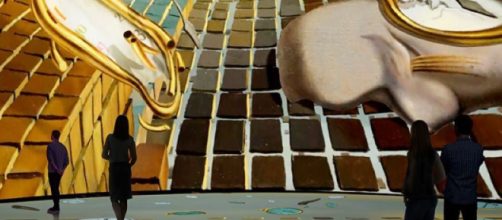This can’t be good, can it?
A new dome sits on top of the Dalí Museum in St. Petersburg, and no, it’s not a shield from missile strikes. Nothing benign like that. Prepare yourselves, art lovers.
Coming this summer is “Dalí Alive 360” – an immersive exhibit of his pocket watches with the consistency of Camembert cheese, and other distortions – ballooned to overspread the museum’s ceilings and floors, as well as walls.
Museum director Hank Hine said in a statement that Dalí would have loved this. Of course he would. He was big on shock and awe.
The Surrealist made headlines in the U.S.
in 1939 after an enamel bathtub crashed through the plate glass window of a Fifth Avenue department store display that he was designing.
Not everyone thought it was an accident as recounted in Julien Levy’s 1977 book “Memoir of an Art Gallery.”
Denying reality
The question that looms, I think, is what will come of submerging this museum and everyone in it with blow-ups of realistic renderings of unreal worlds?
Magnifying the irrational may well disturb rational minds, weighing heavily not only on people’s sense of reality but also on their nervous system.
I had thought the sensory experience was heavy enough when Kandinsky’s abstractions were made into an immersive display in Salt Lake City.
But while hyperbolizing abstract images were dizzying, at least they didn’t deny my reality.
Dalí’s distorted visions jacked up into oceanic proportions could play havoc with one’s mental health.
And that probability increases if his reversible imagery is in this show. Consider his “Slave Market with the Disappearing Bust of Voltaire.”
What you see in the easel version is a pair of nuns standing under an archway that traces Voltaire’s forehead and hair.
The nuns’ heads form Voltaire’s eyes. Their white collars turn into the highlights on his cheeks. And their black habits establish the shade areas below.
What would transmutations of this painting do to viewers? Flooding their vision with warped worlds contorted and twisted every which way is one thing.
But inflating Dalí’s reverse imagery, and in high-definition and high-intensity colors, could send exhibitgoers screaming from this show.
Which way is up
But wait. Last year I reported research from the University of Pennsylvania indicating that art museum visits provide relief from a slew of ills, like anxiety, depression, and chronic pain.
And while the Dalí Museum’s forthcoming show may have the opposite effect, an immersive show of, say, Impressionist Alfred Sisley could prove the university’s case. .
Sisley recreated the brightness of the sun as it reflects on a scene by using regularized dots and squares of side-by-side color with spaces showing the white-primed canvas.
If Sisley’s vividly realized outdoor scene were made into an environment that an immersive show would create, I’d want in on that.
Consider Sisley’s “Snow at Louveciennes,” which describes an empty snow-packed road with a single figure at the far end.
This painting also tells of a broad snow-filled sky with white everywhere. A painting of white light, “Snow at Louveciennes” is a vision of harmony and silence.
And in our noisy, out-of-whack world, that’s an image that I wouldn’t mind engulfing me. How about you?


